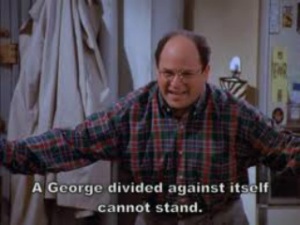According to Hochschild’s Emotion-Management perspective, emotion is more biological than psychological. The theorist exclaims that emotions are particularly tied to behavior with a cognitive aspect presented as a signal function; thereby working as measures to compensate for the rather inward, human expectation against the reality of his or her outward experience. The human activity of evoking or suppressing certain feelings accordingly defines emotion work. In the following video clip of the popular 2004 Blockbuster Mean Girls, character Gretchen Wieners must do emotion work to suppress her feelings of resentment when her peer, character Regina George, scolds her for her personal diction.
Hochschild’s idea of emotion work includes three branches of ideology: cognitive, bodily, and expressive. In the cognitive aspect of emotion work, this concept refers to changing one’s thoughts for example, to change the actual feelings experienced. Through the Mean Girls character Gretchen, the cognitive example serves true as Gretchen desperately feels her peer Regina is a rude, mean spirited person but adjusts these thoughts for the sake of their friendship. The bodily aspect of emotion work entails of changing the physical effects of an emotion. Gretchen further demonstrates emotion work when she describes an instance where because of her “friend’s” request to never where hooped earrings, that she has lied to by pretending she did not like the gift of hooped earrings from her parents. In a motive clandestine speech to the class, Gretchen further describes the expressive aspect of emotion work by attempting to hide her frustration with her friendship troubles via her paper on Ceasar the tyrant.
From the Mean Girls movie, it is evident that emotion work is a modern and absolute theorem to apply to popular culture. Gretchen Wieners, the protagonist proves as an erratic, yet precise example of the multi-faceted branches of emotion work including the cognitive, bodily, and expressive aspects through her experiences with her frenemy, antagonist, Regina George. The human populace faces similar circumstances in their relationships with others, thereby creating a comedic yet relatable example for specific communication. Hochschild’s theorem conclusively may be applied for posterity moving through popular culture and everyday occurrence as individuals adjust their feelings for the situational challenges they may face daily.
